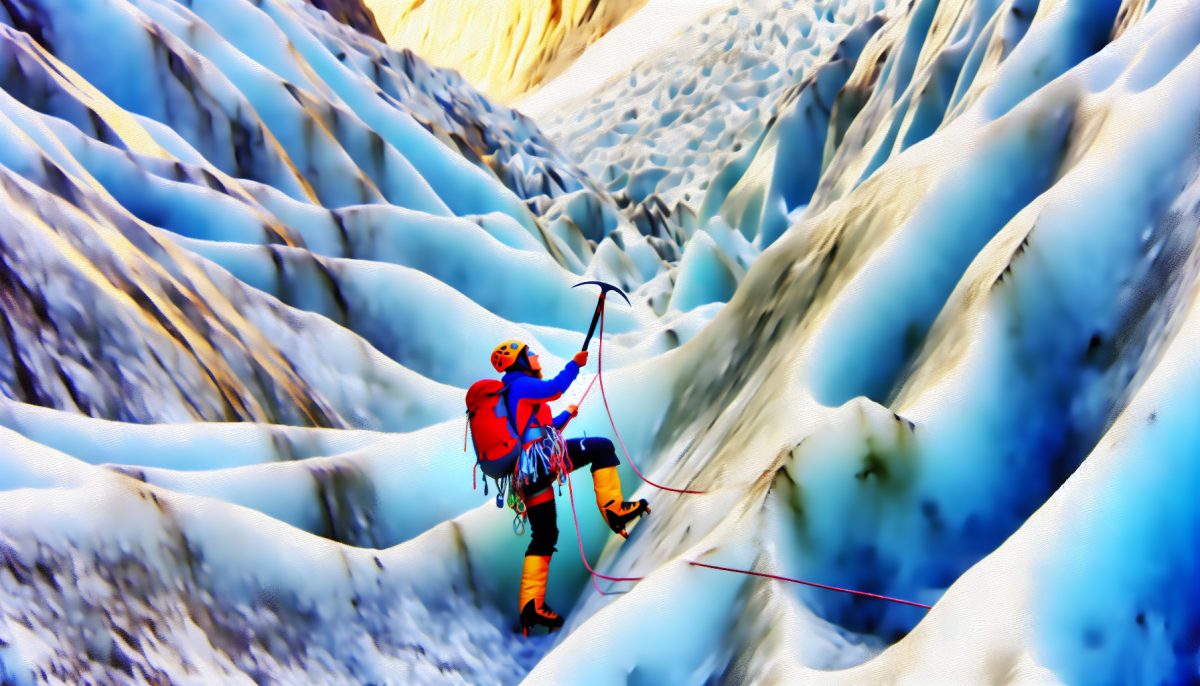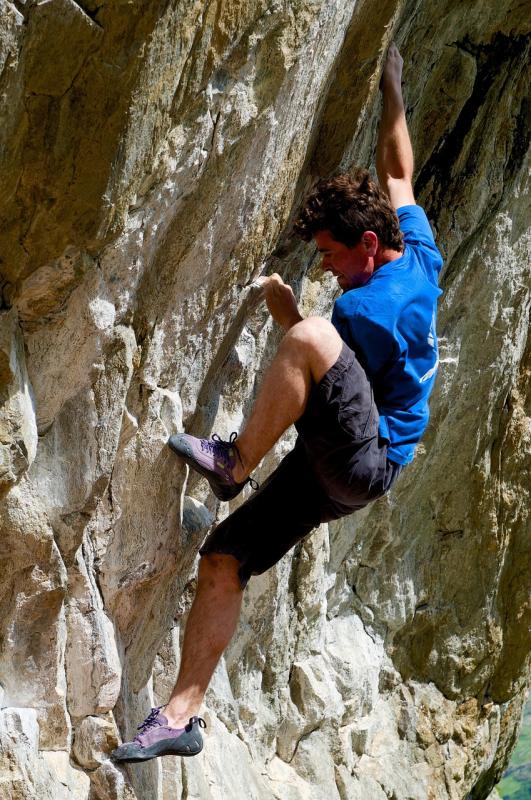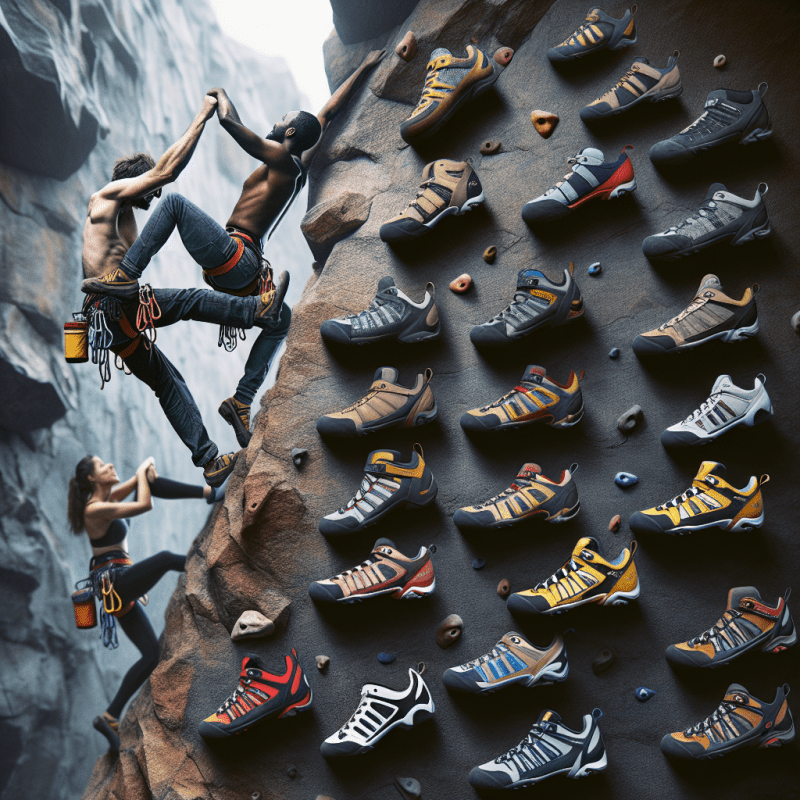When it comes to ice climbing, having the right gear is crucial for both safety and performance. The icy terrain presents unique challenges, and the equipment you choose plays a pivotal role in your climbing success. In this guide, we’ll highlight some essential gear that every ice climber should consider before embarking on their icy adventure.
First and foremost, a solid pair of ice tools is vital. These specialized tools are designed to cut into ice and help you maintain grip on steep ascents. Look for tools with a comfortable grip and a balanced weight to help reduce fatigue during long climbs. Pair your ice tools with high-quality crampons, which attach to your boots and provide essential traction on icy surfaces. Opt for adjustable crampons that can fit a variety of footwear styles.
Next on the list is protective equipment. A sturdy climbing helmet is essential for safeguarding your head from falling ice and tools. Additionally, invest in a good harness that is comfortable, lightweight, and designed for ice climbing. The harness should allow for full range of motion while ensuring that safety gear can be easily attached, such as carabiners and ice screws. Don’t forget to equip yourself with a reliable belay device for lowering and rappelling.
Finally, clothing layers are crucial for staying warm and dry during your ice climbing excursions. Opt for moisture-wicking base layers, insulating mid-layers, and waterproof outer layers that can withstand cold and wet conditions. Accessories like insulated gloves, gaiters, and warm hats will keep your extremities safe from the biting cold while ensuring you have the dexterity needed to handle your gear.
Choosing the Right Climbing Routes
One of the first things to consider when selecting an ice climbing route is your skill level. Most climbing areas will have routes graded for beginners, intermediates, and advanced climbers. Beginners should look for routes with lower grades and less steepness, which often offer more forgiving ice and fewer technical challenges. As you gain confidence and expertise, you can start exploring more complex and vertical areas. Remember, starting with easier routes allows you to build your skills progressively and enjoy the thrilling aspects of ice climbing without unnecessary risks.
Another important factor in route selection is the current weather and ice conditions. It's essential to check the local forecasts and the state of the ice before heading out. Some routes may become less safe after warm temperatures or rain, while others might be in prime condition after a good freeze. Consulting local climbing reports or talking to fellow climbers can provide invaluable insights into current conditions. Always err on the side of caution and choose a route that aligns with both the environmental situation and your climbing prowess.
Lastly, assess the type of ice you will be climbing on. Some routes feature blue ice, which is typically hard and challenging but can provide good protection. Others may have mixed conditions with snowy slopes, making them more accessible yet potentially slippery. Understanding these differences will help you prepare adequately for what to expect. No matter what route you choose, each experience in ice climbing offers an opportunity to learn and grow. Engage with the climbing community and share your experiences to further enhance your skills and knowledge.
Key Techniques for Success
Ice climbing is an exhilarating sport that requires not only physical strength but also mental resilience. To truly master the thrill of ice climbing, it’s essential to adopt a few key techniques that will help you ascend safely and confidently. First and foremost, proper technique in using your tools is vital. This includes mastering the ice axe and crampons. Grip the axe firmly, and focus on placing your picks in solid ice. Good footwork is equally important; ensure that your crampons are used effectively to maintain balance and stability.
Another critical technique for successful ice climbing is route selection. Before you start your climb, take the time to study the ice formation. Look for the best holds and routes that will allow you to conserve energy as you ascend. Understanding various ice types, such as fat, vertical, or mixed ice, will also influence your climbing approach. By scouting your path beforehand, you can position yourself for the most efficient climb, making your adventure more enjoyable.
Lastly, mental preparation plays a key role in ice climbing. This sport can present unexpected challenges, from sudden changes in weather to complex ice conditions. Cultivating a positive mindset and staying focused can greatly enhance your performance. Practice visualization techniques to mentally rehearse your climb, imagining each move before executing it. This preparation will boost your confidence and help you tackle those daunting ice walls with ease.
Safety Tips for Ice Climbers
Ice climbing can be an exhilarating adventure, but it comes with its own set of risks. Whether you are a beginner or an experienced climber, safety should always be your top priority. First and foremost, ensure that you have the proper gear. This includes a helmet, harness, ice axes, crampons, and appropriate clothing to keep you warm and dry. High-quality equipment not only enhances your performance but also significantly reduces the risk of accidents while ice climbing.
Before you start your ice climbing journey, it’s essential to check the condition of the ice. Conditions can change rapidly due to weather, so take the time to assess the stability of the ice. Look for signs of cracks, melting, or unstable formations. Always consult local climbing guides or online resources for the latest information on the routes you plan to attempt. Understanding the terrain and the nuances of the ice can make a huge difference in your safety while ice climbing.
Another critical aspect of safety in ice climbing is mastering proper climbing techniques. Take the time to learn how to place your gear securely into the ice and practice your movements on easier routes. This will build your confidence and help you develop essential skills needed for more challenging climbs. Always climb with a partner, as having someone by your side can be invaluable in case of an emergency. Communicate effectively with your partner about your plans, and establish a system for signaling and making decisions together.
Finally, be mindful of your physical fitness and mental preparedness. Ice climbing is a demanding activity, so maintaining good physical condition will enhance your stamina and reduce fatigue while on the climb. It’s also crucial to stay mentally focused and alert. Avoid taking unnecessary risks and be willing to turn back if conditions become dangerous. Listening to your instincts and knowing your limits will help ensure that your experience with ice climbing remains thrilling yet safe.



